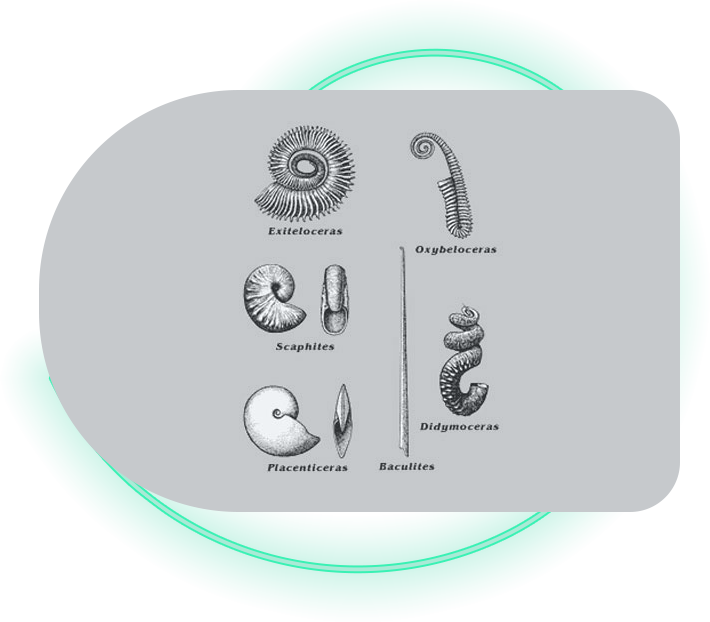Favorite CollLection Triceratops Real Figure Keyring
$11.95

Ammonites are the common name given to the Ammonoidea, an extinct order of cephalopods. These relatives of today’s squid, octopi, and Nautilus were abundant, intelligent, active, and predatory molluscs that lived in shallow (100 meters or less) marine environments throughout the world. Competing with fish for food, they fed on fishes, molluscs (including other cephalopods) and any other prey they could catch. Most ammonites had large jaws capable of crushing shell, as well as grasping arms and excellent vision. Ammonites first appeared in the Late Silurian seas about 415 million years ago, and then abruptly disappeared from the world’s oceans 65 million years ago, at the end of the Cretaceous Period.



Ammonites are found in Paleozoic and Mesozoic marine rocks worldwide. Each type of rock has its own mode of preservation. Most common in shales, limestones and sandstones, is the preservation of only the shell. Other parts of the ammonite are rarely found.In clay beds,the shells are often replaced by pyrite. Lithographic limestones and chalk beds preserve only a faint outline of the shell, but jaws and other parts are sometimes also found. No location has been discovered where all parts of the ammonite are preserved. Compiling data about various parts of different ammonites from many locations gives us only a glimpse of how these creatures may actually have looked.
Ammonites first appeared as a small, straight shelled cephalopod, more than 400 million years ago in the seas that covered what is now Europe. Called Bactrites, these animals were an offshoot of the nautiloids. By the middle of the Devonian (380 million years ago),ammonites had developed diverse shapes and sizes and colonized nearly all the world’s seas.They flourished until the great Permian extinction event (250 MYA) that exterminated 90% of all living species including nearly all ammonite species.
During the Triassic Period (250-206 MYA), ammonites once again diversified and inhabited seas worldwide. Another major extinction occurred at the end of the Triassic which annihilated all but one family of ammonites. This one surviving family again evolved,diversified, and flourished in the seas of the world throughout the Jurassic and Cretaceous Periods (205-65 MYA). Ammonites again developed numerous strange and aberrant shapes. The extinction event at the end of the Cretaceous Period (65 MYA) which ended the reign of the dinosaurs on land, also extinguished the ammonites, one of the most successful animals that ever lived.
During the Late Cretaceous Period (65 to 99 MYA) much of the central portion of North America was covered by a large, shallow sea that extended from New Mexico and Texas north into Canada. Ammonites were the most numerous predators inhabiting that sea. Evidence of their massive numbers is apparent by the abundance of their remains in the marine rocks of today’s Western Interior region. These ammonites competed with fishes of comparable size for food while also providing an ample supply of food for the larger fishes, reptiles, and cephalopods who preyed on them and shared this sea with them.
The Institute has several excellent books on Ammonites. Two of which were written by the Institute’s Vice President Neal Larson, the “Ammonite Guru.”